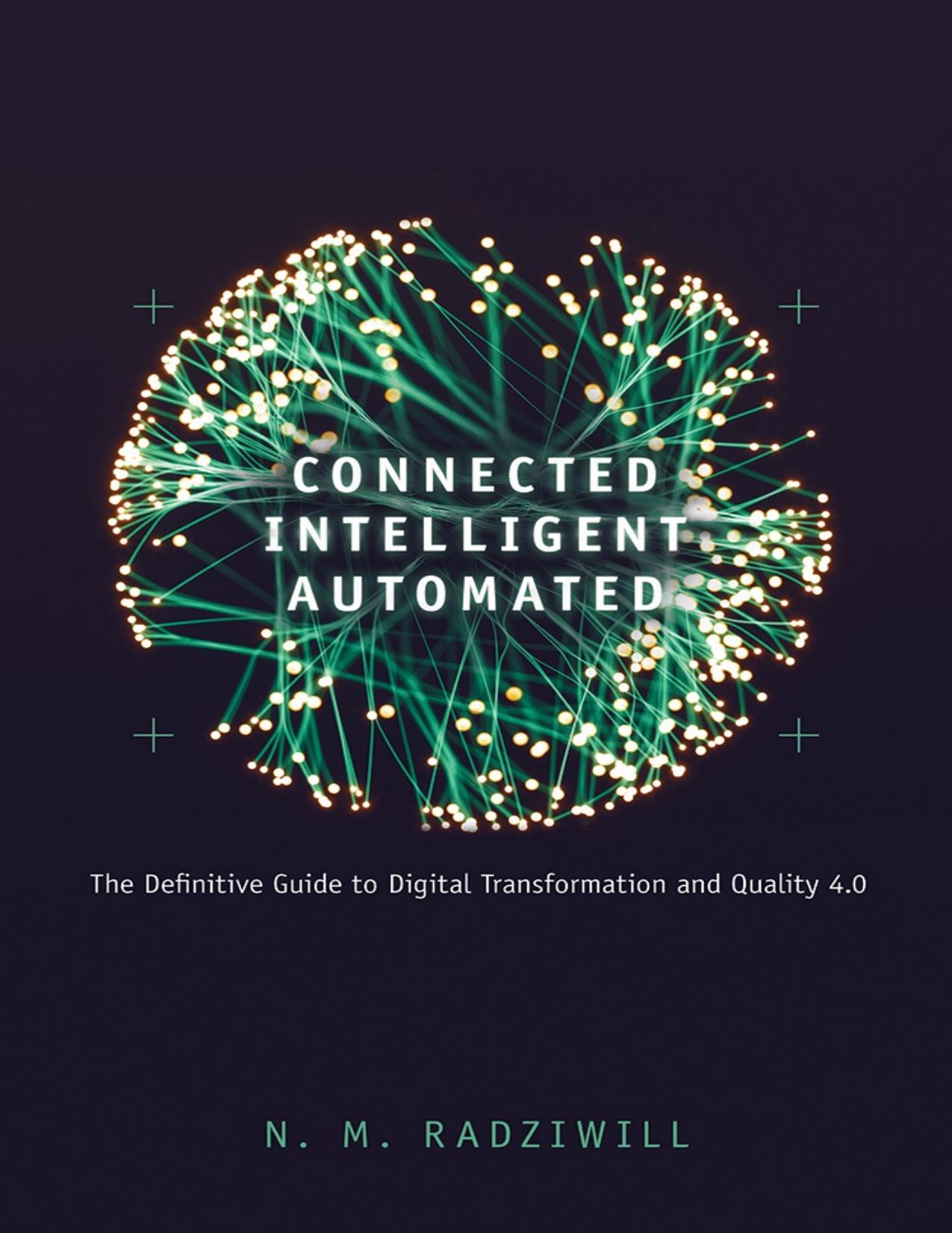Connected, Intelligent, Automated: The Definitive Guide to Digital Transformation and Quality 4.0 by Radziwill N. M

Author:Radziwill, N. M. [Radziwill, N. M.]
Language: eng
Format: epub, pdf
Publisher: Quality Press
Published: 2021-03-23T16:00:00+00:00
CHAPTER NINE
SOFTWARE APPLICATIONS AND DATA PLATFORMS
What is it about the container that is so important? Surely not the thing itself ⦠the value of this utilitarian object lies not in what it is, but in how it is used. The container is at the core of a highly automated system for moving goods from anywhere, to anywhere, with a minimum of cost and complication on the way.
âMARC LEVINSON IN THE BOX: HOW THE SHIPPING CONTAINER MADE THE WORLD SMALLER AND THE WORLD ECONOMY BIGGER
Until the 1950s, the transportation industry had busy ports and bustling docks as its heart, employing millions of people worldwide and keeping the nascent global economy humming. Levinson (2016) paints the chaotic picture: warehouses and manufacturing plants operating close by, sweaty workers carrying loads on their backs and up gangplanks, cargo packed into sacks and bales and wooden boxes. There were no standards for packaging or organizing, so he describes a daily scene in which safety risks were everywhere:
The dock would be covered with a jumble of paperboard cartons and wooden crates and casks. There might be steel drums of cleaning compound and beef tallow alongside 440-pound bales of cotton and animal skins. Borax in sacks so heavy it took two men to lift them, loose pieces of lumber, baskets of freshly picked oranges, barrels of olives, and coils of steel wire might all be part of the same load of âmixed cargo,â waiting on the dock amid a tangle of ropes and cables, as lift trucks and hand carts darted back and forth.
Loading and unloading required mostly manual labor, aided by hooks and winches, and was literally backbreaking. Although the work was treacherous, demand was highly variable because it depended on the arrival times of the ships and the type of cargoâperishable goods had to be unloaded much more quickly, requiring more workers. Competition to receive an hourly wage was intense, and corruption was the norm, so getting paid was never guaranteed. Gangs took over some of the docks, and violent strikes erupted at others, eventually leading to labor laws and an imposed system for full-time employment. Still, the conditions created a tight-knit culture, group identity, and commitment to the âglobal fraternityâ of longshoremen.
By the 1950s, these freight terminals had been acknowledged as bottlenecks, and the first cargo containers were proposed as a way to simplify packing, carrying, and unpacking. Although safety improved, there were drawbacks. The lack of weight limits made lifting more difficult, unused container space was a significant economic penalty, and it was much more expensive to ship in containersâup to 75% more. Many times, there was also an additional fee to ship the container itself back to the point of origin. Because everyone in the industry wanted to reduce the total cost of shipping, the hunt for a solution continued. And as Levinson explains, âThe solution came from an outsider who had no experience with ships.â
In 1934, twenty-one-year-old Malcolm McLean started driving trucks for a local transport company. Just one year later, he owned three of his own trucks and employed nine other drivers.
Download
Connected, Intelligent, Automated: The Definitive Guide to Digital Transformation and Quality 4.0 by Radziwill N. M.pdf
This site does not store any files on its server. We only index and link to content provided by other sites. Please contact the content providers to delete copyright contents if any and email us, we'll remove relevant links or contents immediately.
International Integration of the Brazilian Economy by Elias C. Grivoyannis(70065)
The Radium Girls by Kate Moore(11557)
Turbulence by E. J. Noyes(7659)
Nudge - Improving Decisions about Health, Wealth, and Happiness by Thaler Sunstein(7185)
The Black Swan by Nassim Nicholas Taleb(6719)
Rich Dad Poor Dad by Robert T. Kiyosaki(6105)
Pioneering Portfolio Management by David F. Swensen(6034)
Man-made Catastrophes and Risk Information Concealment by Dmitry Chernov & Didier Sornette(5586)
Zero to One by Peter Thiel(5442)
Secrecy World by Jake Bernstein(4342)
Millionaire: The Philanderer, Gambler, and Duelist Who Invented Modern Finance by Janet Gleeson(4046)
The Age of Surveillance Capitalism by Shoshana Zuboff(3946)
Skin in the Game by Nassim Nicholas Taleb(3938)
The Money Culture by Michael Lewis(3791)
Bullshit Jobs by David Graeber(3785)
Skin in the Game: Hidden Asymmetries in Daily Life by Nassim Nicholas Taleb(3695)
The Dhandho Investor by Mohnish Pabrai(3533)
The Wisdom of Finance by Mihir Desai(3493)
Blockchain Basics by Daniel Drescher(3292)
